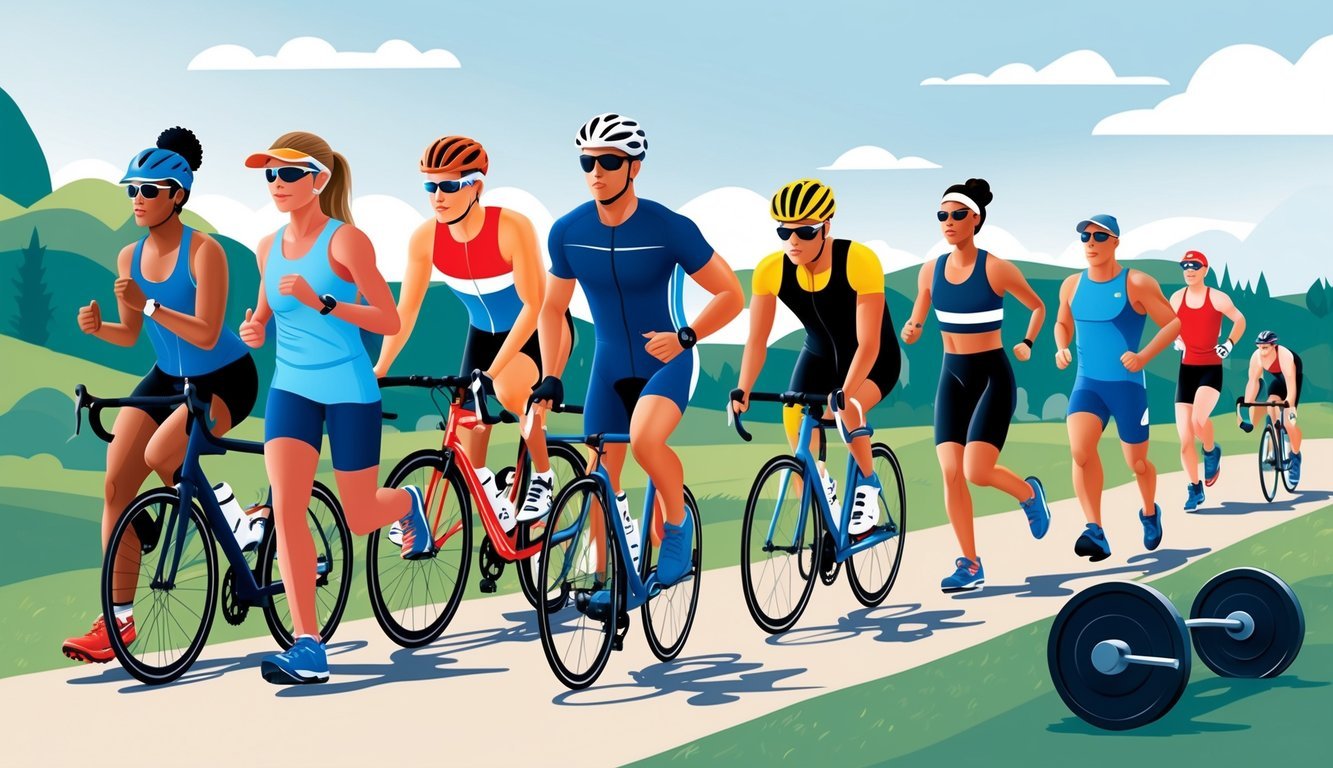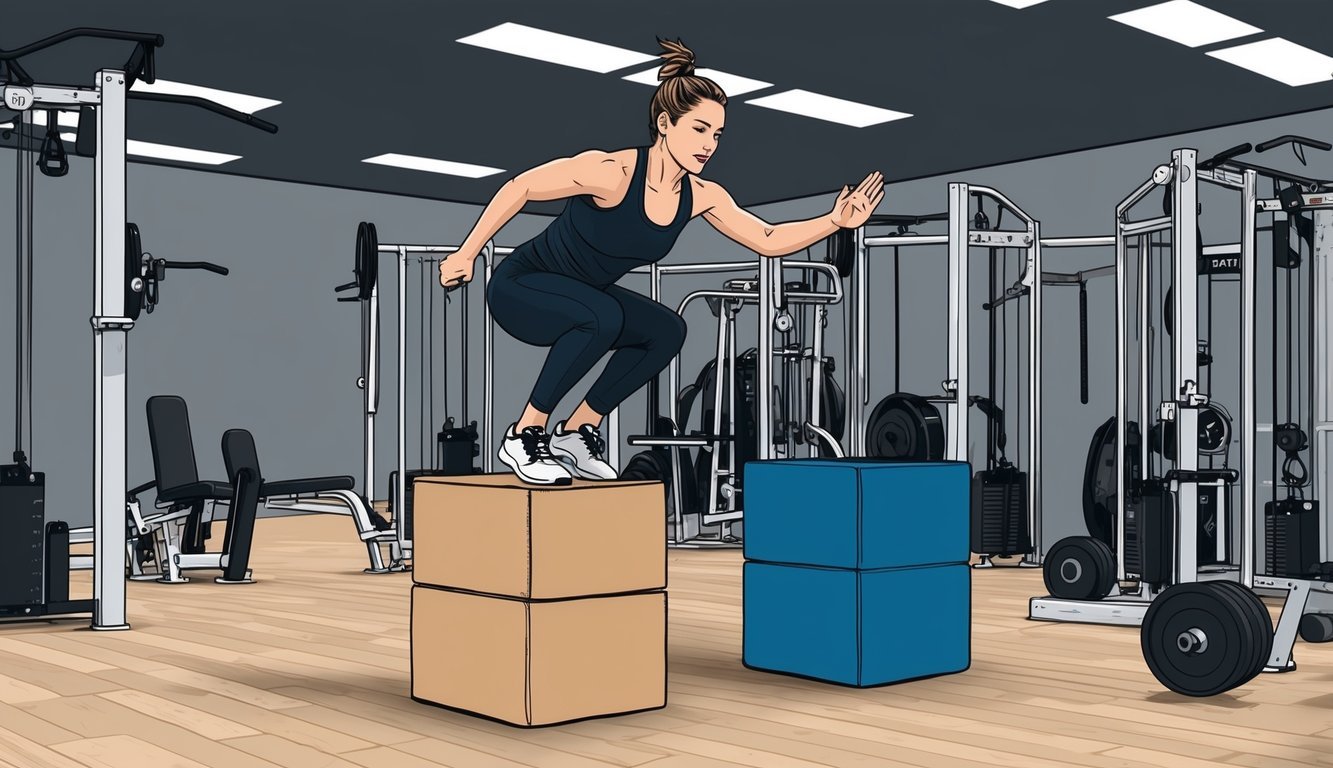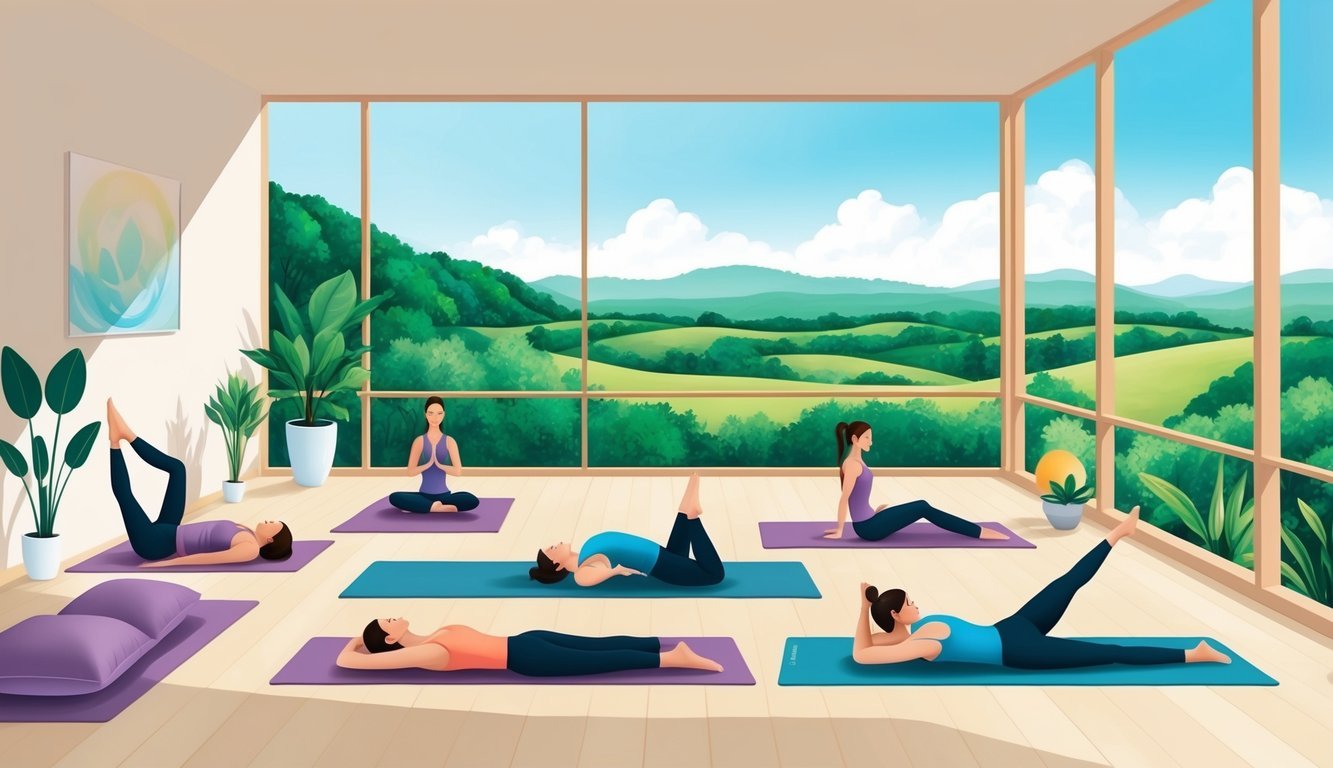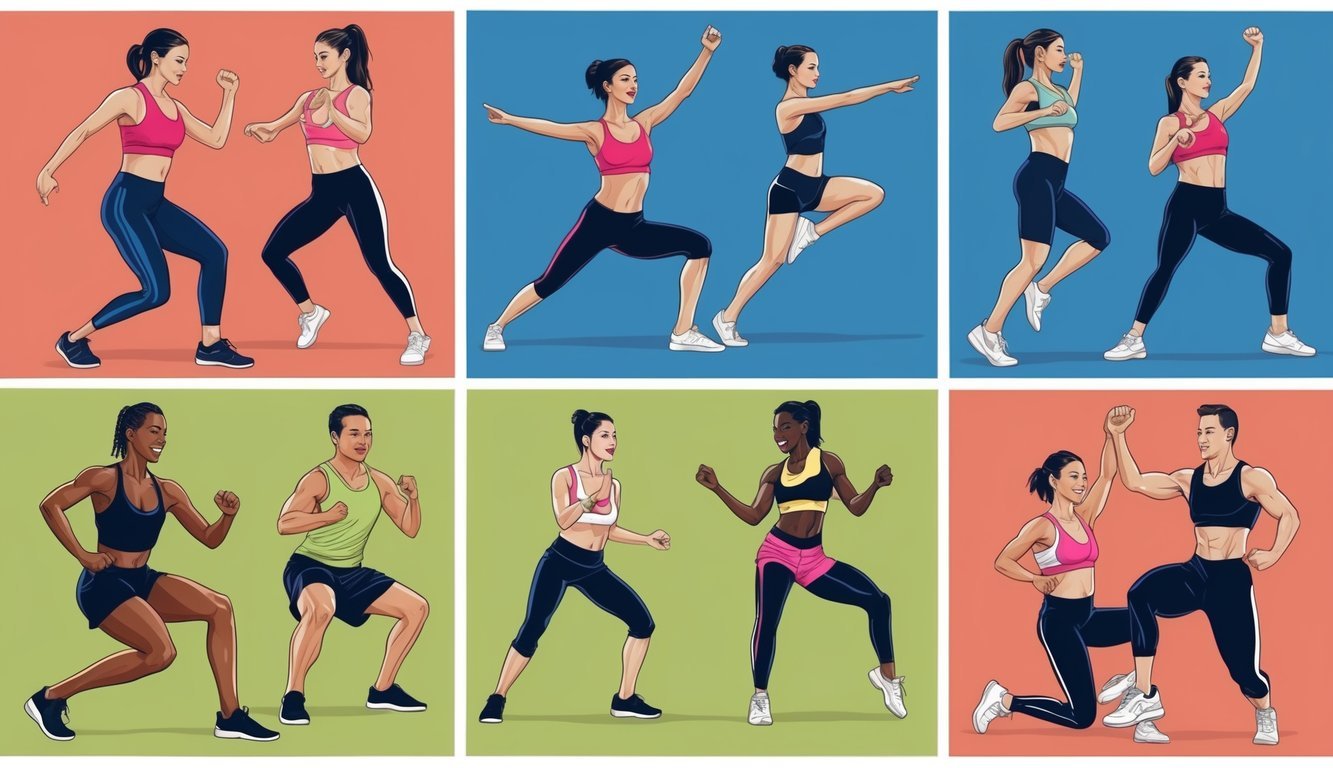As someone who enjoys staying active, I know that boosting physical endurance can make a big difference in how I feel during workouts and day-to-day activities.
Finding effective ways to enhance my stamina not only helps me tackle tougher challenges but also keeps me motivated to maintain an active lifestyle.

Whether I’m hitting the trails or simply enjoying a long walk, building endurance is essential for getting the most out of any physical activity.
By incorporating a few key strategies into my routine, I can improve my performance and enjoy the journey of fitness even more.
1) Interval Training
Interval training has become one of my go-to methods for boosting endurance.
It involves alternating periods of high-intensity effort with lower-intensity recovery.
This mix keeps things interesting and really effective.
I usually start with a 5-minute warm-up to get my body ready.
Then, I pick a challenging work interval, like a 30-second sprint, followed by 1 minute of easy jogging.
I repeat this cycle several times.
What I love about interval training is how it helps me build stamina while burning more calories in less time.
Just a few quick sessions a week can lead to noticeable improvements in my aerobic capacity.
Plus, I feel like I recover faster between intense workouts, which is a big win for endurance activities.
It’s versatile too.
Whether I’m running, cycling, or swimming, I can easily adjust intervals to fit my routine.
If you’re looking for a straightforward way to enhance your endurance, I highly recommend giving interval training a try.
2) Hill Sprints
I’ve found that hill sprints can really amp up my endurance.
These short bursts of speed on an incline push my body to use its anaerobic energy systems.
That means I get stronger and build muscle, especially in my glutes and hip flexors.
To start, I keep my sprints to about 10-20 seconds, followed by a good rest.
It’s important for me to recover before I go again.
I like aiming for a high intensity, around 9 out of 10.
As I progress, I add more reps.
Initially, I do 3-4 sprints, then gradually increase by 1-2 as I feel ready.
Listening to my body is key.
I often mix hill sprints into my training routine alongside easy and recovery runs.
Adjusting the intensity and incline can help me keep challenging myself.
Just a couple of sessions each week makes a noticeable difference in my stamina.
3) Swimming Laps
Swimming laps is one of my favorite ways to boost endurance.
It’s low-impact, making it easier on my joints while still providing a solid workout.
The rhythm of the water really helps me focus on my breathing.
I typically start with a warm-up, like 500 meters of easy swimming.
This gets my body ready for the main workout.
I love incorporating drills, like repeated freestyle sprints, to build speed and stamina.
One effective workout I enjoy includes sets of 100s.
I try to go faster with each 100, taking short breaks in between.
This technique, called descending, pushes me to improve with every lap I swim.
Swimming isn’t just good for endurance; it also helps with flexibility and strength.
I often feel my muscles working in a different way compared to land exercises.
Plus, the water’s buoyancy creates a peaceful feeling that makes the workout enjoyable.
Adding swimming laps to my routine has definitely helped me enhance my physical endurance while providing a refreshing change from other workouts.
4) Cycling Long Distances

Cycling long distances has been a game changer for my endurance.
I find it helps build stamina and improves my overall fitness.
To get started, I like to gradually increase the distance of my rides.
Aiming for a 10-20% increase each week keeps me progressing without overdoing it.
I prioritize one long ride each week, making sure to keep it conversational.
It usually lasts between three to five hours, allowing my body to adapt.
Incorporating tempo work also benefits my training.
I aim for 20-60 minutes of tempo cycling once or twice a week.
This helps my body clear lactate more efficiently.
Listening to my body is crucial, too.
If I feel fatigued, I give myself permission to rest or adjust my goal for the ride.
Proper bike fit also plays a significant role in preventing discomfort or injury.
Long-distance cycling not only boosts my endurance, but it also helps clear my mind and enjoy the outdoors.
5) Plyometric Exercises

Plyometric exercises are a fantastic way to boost endurance and power.
These explosive movements help improve overall fitness and can easily fit into my routine.
Exercises like squat jumps get my heart rate up while strengthening my legs.
I start by lowering into a squat and then jumping up, landing softly back into the squat position.
Jump ropes are another favorite.
They not only enhance my calf strength but also improve coordination.
I love how simple it is to incorporate jumping rope for a quick cardio boost.
Box jumps challenge my agility and build leg strength.
I find a sturdy box and jump onto it, making sure to land gently.
This exercise really gets my muscles working.
Incorporating these plyometric movements into my workouts keeps things dynamic and fun.
Plus, they don’t require fancy equipment, making them easy to do anywhere.
6) Yoga for Flexibility

Incorporating yoga into my routine has made a noticeable difference in my flexibility.
Yoga isn’t just about stretching; it’s a holistic practice that encourages mindful movements.
I enjoy poses like the Standing Forward Fold, which helps loosen my hamstrings and back.
It’s simple to get into and feels great after a long day.
Triangle Pose is another favorite.
This one stretches my sides while also engaging my core.
I really appreciate how it balances flexibility with strength.
The Cobra Pose is excellent for opening my chest and improving spine flexibility.
Breathing deeply while holding these poses is key for me.
I’ve found that consistent practice is where the magic happens.
Just a few minutes daily can significantly enhance my flexibility over time.
Whether I’m warming up or cooling down, yoga has become an essential part of my active lifestyle.
7) Dance Workouts

I’ve found dance workouts to be a fantastic way to boost physical endurance while having fun.
When I really get into it, the vigorous movements raise my heart rate and challenge my stamina.
The best part is that dance workouts can fit different skill levels and preferences.
From salsa to hip hop, there’s something for everyone.
These classes often incorporate upbeat music, making the workouts feel less like exercise and more like a party.
Not only do dance workouts improve cardiovascular health, but they also enhance coordination and flexibility.
I appreciate how they offer a full-body workout without the monotony of traditional cardio routines.
When I’m in a dance class, I feel more energized and engaged.
Each session helps me push my limits and adds variety to my routine, which keeps me coming back for more.
Dancing truly is a joyful way to stay active while building endurance.
8) Hiking Steep Trails

Hiking steep trails has become one of my favorite ways to boost physical endurance.
The challenge of climbing can really push my limits and build strength in my legs and lungs.
I usually start with shorter, less challenging hikes and gradually work my way up to steeper trails.
This helps my body adapt without risking injury.
Before heading out, I make sure to warm up.
I do simple lunges and stretches to get my muscles ready.
During the hike, I focus on maintaining a steady pace while being mindful of my breathing.
Using proper technique is also key.
I keep my spine upright and avoid letting my knees extend beyond my toes.
This keeps my form safe and effective.
To enhance my stamina, I often add interval training to my routine.
It’s all about alternating periods of exertion with recovery.
I find that this method helps me perform better on those tough ascents.
Understanding Physical Endurance

Physical endurance is about sustaining activity over time.
It’s essential for athletes and anyone leading an active lifestyle.
I’ve found that developing endurance can enhance performance in various activities and improve overall health.
What Is Physical Endurance?
Physical endurance refers to the body’s ability to perform exercises or activities for an extended period.
It involves two main types: muscular endurance and cardiovascular endurance.
Muscular endurance is about how long a muscle can sustain effort, while cardiovascular endurance is related to how effectively the heart and lungs supply oxygen during extended physical activity.
Improving endurance means I can perform daily tasks more easily and enjoy longer workouts without feeling tired.
Factors that influence endurance include genetics, training volume, and nutrition.
Monitoring these aspects can help maximize my endurance levels.
Importance of Physical Endurance
Having good physical endurance supports a healthier lifestyle.
It can lead to increased stamina, making daily activities like climbing stairs or walking longer distances feel less taxing.
Additionally, endurance training helps prevent fatigue during workouts and sports.
Building endurance through regular exercise can also improve cardiovascular health, ensuring that the heart and lungs work efficiently during physical activities.
Engaging in activities like running, swimming, or cycling can enhance physical stamina, allowing individuals to sustain effort for longer periods.
Over time, this increased stamina contributes to overall well-being and a more active lifestyle.
Better endurance translates to more effective workouts, greater calorie burn, and faster recovery times.
By prioritizing endurance, I can also reduce the risk of injury, as fitter muscles and cardiovascular systems are less prone to strain.
This foundation not only benefits my physical health but also boosts my confidence and motivation to stay active.
Nutrition for Endurance

When it comes to enhancing endurance, nutrition plays a critical role.
It’s about fueling my body with the right nutrients to sustain longer activities.
Here’s how I approach it.
Balanced Diet Tips
Eating a balanced diet is essential for endurance athletes like me.
I focus on carbohydrates as the primary source of energy.
Here are some key foods I include:
-
Carbohydrates: I load up on whole grains, fruits, and starchy vegetables. Foods like rice, pasta, and quinoa keep my energy levels up.
-
Protein: I opt for lean sources such as chicken, fish, and legumes. On training days, I aim for 1.2 to 2 grams of protein per kilogram of body weight.
-
Healthy Fats: Avocado, nuts, and olive oil provide necessary fats for sustained energy.
During intense training periods, I might eat up to 10 grams of carbs per kilogram of body weight to maximize performance.
I listen to my body and adjust my intake according to my training intensity.
Hydration Strategies
Staying hydrated is vital for maintaining endurance.
I drink plenty of water throughout the day, but it’s especially important before, during, and after workouts.
For longer activities, I incorporate electrolytes, especially in hot weather.
Here’s my approach:
-
Before Exercise: I hydrate well in the hours leading up to my workout. Aiming for about 500-700 ml of water can help.
-
During Exercise: I sip on water or electrolyte drinks regularly. I aim for 150-200 ml every 15-20 minutes.
-
After Exercise: Post-workout, I replenish lost fluids and electrolytes with drinks or foods high in sodium like broth or sports drinks.
I keep track of my hydration to ensure I’m performing my best and avoiding fatigue.

